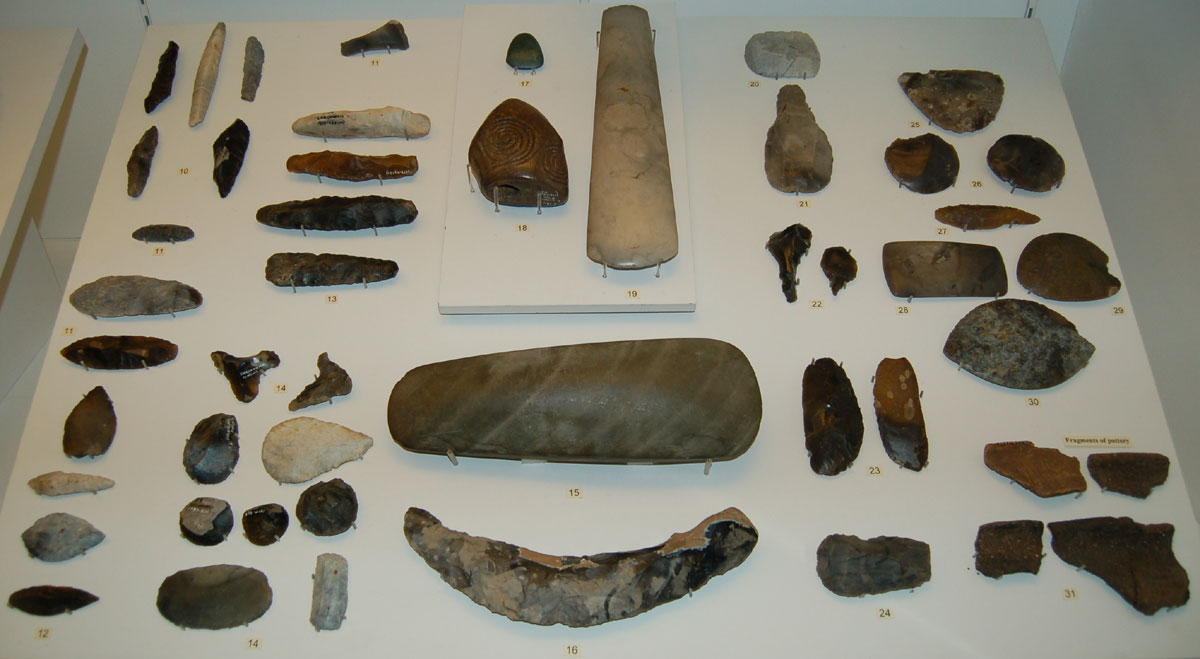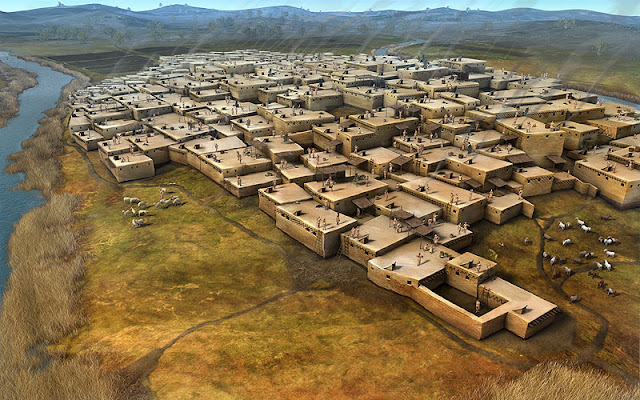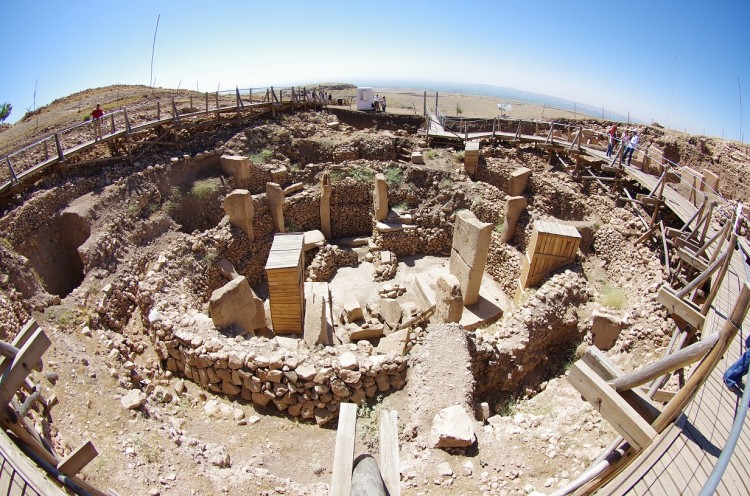The nature of evidence. Below is an image found in Çatalhöyük, one of the best known and oldest early farming villages.(c.7500 BCE, Turkey) Is it the world's oldest map? Or something else? The top part of the image is as it was found; below is an artist reconstruction

Civilization
-
One way to define civilization is any organized group of humans who radically modify their environment
-
By this definition, the emergence of significant farming and herding by 7000 BCE marks the beginnings of civilization
-
New stone technology marks the Neolithic Age (12,000 BCE - c. 4000 BCE, depending on region)

Emergence of husbandry
-
Husbandry is the process of herding, plus the domestication of animals for herding
-
May have developed out of hunting
-
Appears well established in parts of Africa, Europe, and Asia by 7000 BCE
-
Characteristics of herding societies
-
Emerge primarily in areas of widespread grasslands, like the steppes of central Eurasia
-
Nomadic - build tombs and monuments, but no villages and towns
-
Depend entirely on animal products, including dairy (while most adults in non-herding societies are lactose intolerant)
-
As they lack key resources on the grasslands, either raid or trade with settled communities to get those resources
-
Emergence of farming and villages
-
First villages pre-date farming (at c. 14-15,000 years ago), in rich areas for hunting and gathering
-
Why farming?
-
Increase of disease, vulnerable to crop failures, higher frequencies of malnutrition
-
Many possible reasons, but still not entirely clear
-
human population may have become too large to be supported by hunting and gathering alone
-
but farming emerges relatively resource rich areas
-
once farming appears, population increases make it impossible to abandon
-
-
May also emerge from abundance - areas where it was easy to farm may have encouraged people to settle
-
Politics may play a role, as leaders require surplus food to buy loyalty
-
Farming may also emerge to supply ritual foods used in religious ceremonies
-
Climatic instability may have encouraged people to settle so that they could tend to plants to ensure food supplies
-
Gathers naturally engage in some tending of the plants they get food from. This may have lead to a gradual development of agriculture
-
-
One of the best known of these early farming villages is Çatalhöyük (c.7500 BCE) in southern Turkey
-
Artist reconstruction

-
-
-
Farming develops based on soil and the plow
-
Develops first in areas with loose soil, easy to plow
-
Appears first in New Guinea, the Middle East, Iran and Egypt, c. 7000 BCE
-
Not a product of diffusion as earlier believed, but develops independently in several places
-
Most productive in alluvial plains (relatively flat areas that are regularly flooded)
-
Once started, people do not (except under extreme stress) return to hunter-gatherer lifestyles
-
-
Megalithic construction
-
Large stone structures, probably temples, shrines, and graves, develop in numerous places.
-
Perhaps the most sophisticated is Göbekli Tepe (c. 9600 BCE) in Turkey

-